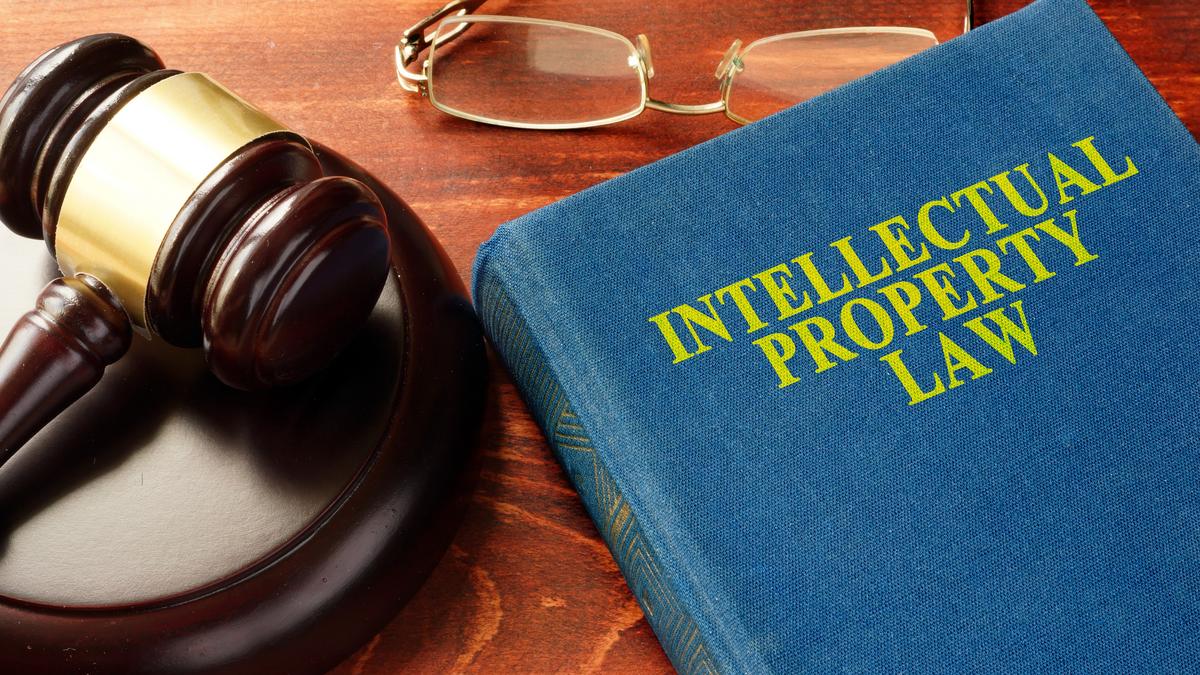In today’s rapidly evolving world, ideas and innovation have become valuable commodities. Whether you are an individual with a creative streak or a business owner with groundbreaking inventions, it is essential to protect your ideas from being stolen or misused. This is where intellectual property law comes into play, safeguarding your intangible creations and providing you with legal recourse in case of infringement. Understanding intellectual property law, the various types of intellectual property rights, and the steps to protect your ideas is crucial for anyone seeking to maintain a competitive advantage in the marketplace.
Understanding Intellectual Property Law
Definition and Importance of Intellectual Property Law
Before delving into the intricacies of intellectual property law, it is essential to grasp its fundamental concepts and the importance it holds in the modern world. Intellectual property refers to creations of the mind, such as inventions, literary and artistic works, symbols, names, images, and designs, which are protected by various legal mechanisms. Intellectual property law provides creators and innovators with exclusive rights to their creations, enabling them to control and profit from their work.
The importance of intellectual property law cannot be overstated, as it serves as a powerful tool for promoting innovation, creativity, and economic growth. By granting creators the right to their work, it incentivizes them to share their ideas and creations with the world, fostering a culture of innovation and enabling society to progress.
Furthermore, intellectual property law plays a crucial role in encouraging investment in research and development. When inventors and creators know that their work will be protected, they are more likely to invest time, resources, and effort into developing groundbreaking ideas and products. This, in turn, leads to advancements in various fields, ranging from technology and medicine to art and entertainment.
Different Types of Intellectual Property Rights
Intellectual property law encompasses various rights that protect different types of intangible creations. The three primary forms of intellectual property rights are patents, copyrights, and trademarks.
Patents: Patents protect inventions, such as new processes, products, or improvements to existing products. They grant the inventor exclusive rights to use, sell, or license their invention for a limited period, usually 20 years.
Copyrights: Copyrights protect original works of authorship, such as literary, artistic, musical, or dramatic creations. They grant the creator exclusive rights to reproduce, distribute, display, perform, and create derivative works from their original creation for the duration of their life plus 70 years.
Trademarks: Trademarks protect distinctive signs, symbols, or logos that represent brands, businesses, or products. They differentiate one entity from another and safeguard the reputation and goodwill associated with a particular brand or product.
While these three types of intellectual property rights are the most commonly known, it is important to note that there are other forms of protection as well. For example, trade secrets safeguard confidential business information, such as formulas, manufacturing processes, and customer lists. Additionally, geographical indications protect products that originate from a specific region and possess unique qualities or characteristics.
By providing legal protection for a wide range of intellectual creations, intellectual property law fosters a climate of innovation, creativity, and fair competition. It encourages individuals and organizations to invest in research, development, and artistic endeavors, knowing that their efforts will be rewarded and their rights will be safeguarded.
The Role of Intellectual Property Law in Business
Intellectual Property Law and Innovation
Intellectual property law plays a vital role in fostering innovation within the business world. By granting exclusive rights to inventors and creators, it incentivizes investment in research and development, driving technological advancements and improvements in products and services. These exclusive rights allow businesses to enjoy a competitive edge, giving them the freedom to commercialize their innovation and protect their market share.
Furthermore, intellectual property rights encourage collaboration and knowledge sharing among industry players. Through mechanisms such as licensing agreements and cross-licensing deals, companies can leverage each other’s intellectual property to create new and innovative products. This collaborative approach not only spurs innovation but also promotes healthy competition, benefiting both businesses and consumers alike.
Intellectual Property Law and Competitive Advantage
Intellectual property serves as a valuable asset for businesses, providing them with a competitive advantage by differentiating their offerings from competitors. The exclusive rights granted by intellectual property law create barriers to entry, preventing others from replicating or imitating successful innovations. This exclusivity enhances a company’s market position, strengthens its brand image, and helps it build customer loyalty.
In addition to safeguarding against infringement, intellectual property rights also enable businesses to monetize their intangible assets through licensing, franchising, and strategic partnerships. By capitalizing on their intellectual property portfolio, companies can generate additional revenue streams, expand their market reach, and establish themselves as industry leaders in their respective fields.

Steps to Protect Your Ideas
Identifying Your Intellectual Property
The first step in protecting your ideas is to identify the intellectual property inherent in your creations. It is crucial to determine whether your innovation qualifies for patent protection, copyright protection, or if it can be safeguarded through other intellectual property rights.
When identifying your intellectual property, it’s essential to conduct a thorough analysis of your creations to understand their unique aspects. This process involves evaluating the novelty and inventiveness of your ideas to determine their eligibility for patent protection. For creative works, such as literature, music, or art, recognizing the originality and expression in your creations is key to establishing copyright protection. By delving deep into the core of your ideas, you can uncover the valuable aspects that warrant legal protection.
Registering Your Intellectual Property
Once you have identified your intellectual property, the next step is to register it with the appropriate intellectual property office or authority. Registering your intellectual property provides you with evidence of ownership and grants you exclusive rights, strengthening your legal position in case of infringement.
Registering your intellectual property is a proactive measure that offers you a competitive edge in the market. By securing patents for your inventions, you not only protect your ideas from being copied or stolen but also create opportunities for licensing and commercialization. Copyright registration serves as a public declaration of your creative ownership, deterring potential infringers and establishing a foundation for legal recourse in case of disputes. Similarly, trademark registration safeguards your brand identity, ensuring that consumers can easily identify and differentiate your products or services in the marketplace.
For inventions, filing a patent application is crucial to secure exclusive rights. Copyright registration is necessary to establish a public record of ownership of your creative works. Registering trademarks protects your brand identity and prevents others from using similar signs or symbols.
Legal Consequences of Intellectual Property Infringement
Penalties for Infringement
Intellectual property infringement can have severe consequences for both individuals and businesses. If someone infringes upon your patents, copyrights, or trademarks, they may be subject to legal action and potential financial liabilities. Infringers may be required to pay damages, disgorged profits, and legal fees. In some cases, courts may issue injunctions to prevent further infringement.
It is important to note that the penalties for intellectual property infringement can vary depending on the severity of the violation and the jurisdiction in which the infringement occurred. In some cases, intentional infringement may result in criminal charges, leading to fines or even imprisonment. Additionally, repeat offenders may face more severe consequences, including heightened financial penalties and permanent injunctions. Learn more about effective solutions for legal conflicts: a guide to litigation and dispute resolution.
How to Handle Intellectual Property Disputes
In the event of an intellectual property dispute, it is essential to seek legal assistance to protect your rights effectively. Engaging the services of a qualified intellectual property attorney can help you navigate the complexities of the legal system and increase your chances of a favorable outcome. Negotiating settlements, taking legal action, or pursuing alternative dispute resolution methods are among the various strategies employed in resolving intellectual property disputes.
Furthermore, it is crucial to conduct a thorough investigation to gather evidence of the infringement and assess the extent of the damages caused. This evidence may include documentation of the original intellectual property, proof of the infringing activity, and financial records to quantify the losses suffered. By building a strong case supported by compelling evidence, you can strengthen your position in negotiations or court proceedings and improve the likelihood of a successful resolution to the dispute.
Maintaining and Managing Your Intellectual Property
Regular Audits and Updates
Managing intellectual property goes beyond the initial registration process. Regular audits of your intellectual property portfolio help ensure that your rights are up to date and that you have a clear understanding of the value each asset carries. This enables you to make informed decisions regarding licensing, selling, or obtaining additional protection for your creations.

Licensing and Selling Intellectual Property
One way to leverage your intellectual property is through licensing or selling it to others. Licensing allows you to grant others permission to use your intellectual property while retaining ownership. Selling your intellectual property outright transfers all rights and ownership to another entity. These options provide opportunities to generate revenue and expand the reach of your intellectual creations.
However, it is important to carefully consider the terms and conditions of any licensing or selling agreement. You want to ensure that your intellectual property is being used in a way that aligns with your values and goals. Additionally, you may want to include provisions that protect your rights and prevent unauthorized use or infringement.
Protecting your ideas with intellectual property law is a critical component of success in today’s competitive and innovation-driven world. By understanding the various types of intellectual property rights, taking proactive steps to protect your ideas, and managing your intellectual property portfolio strategically, you can ensure that your innovations and creations remain secure while enjoying the benefits of exclusivity and competitiveness.
Intellectual property law acts as a powerful tool for creators, inventors, and businesses alike, fostering a vibrant environment for innovation and growth. It encourages individuals and organizations to invest time, resources, and effort into developing new ideas and solutions, knowing that their hard work will be protected and rewarded.


